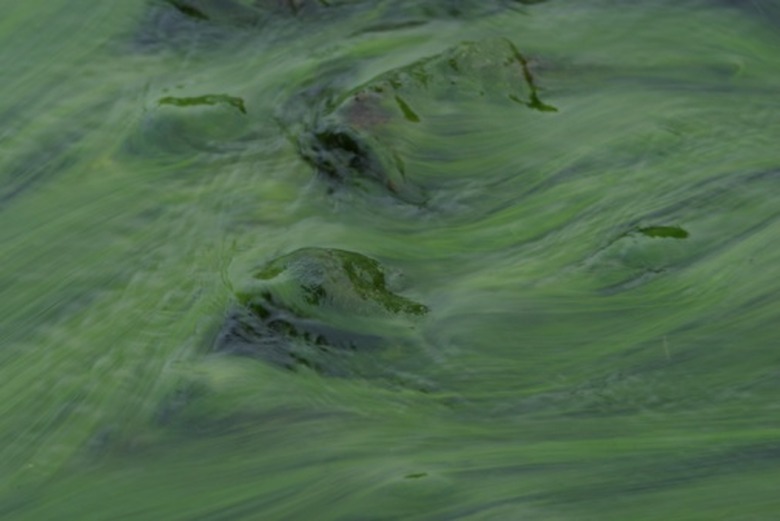Types Of Eutrophication
Eutrophication, or nutrient pollution, is a major environmental concern for lakes, tributaries, rivers, estuaries and coastal waters. Eutrophication refers to an increase in nutrients, especially nitrogen and phosphorus, which leads to an explosive increase in the growth of algae, called algal blooms. Eutrophication also includes the increased input of sedimentary material. There are two types of eutrophication: natural and cultural. Furthermore, there are two types of sources for the nutrients and sedimentary materials: point and nonpoint.
Natural Eutrophication
Natural Eutrophication
Over centuries, gradual buildup of nutrients, sediments and organic material begin to fill many lake basins. As the lakes become more eutrophic, they are able to support more living organisms, including damaging algae, as a result of higher nutrient levels. At the same time, their littoral area increases as a result of sedimentary buildup. Eventually, this process not only affects the water quality but allows colonization by terrestrial vegetation in the expanding shallows. The length of this process depends on the characteristics of the lake basin, the watershed and the climate.
Cultural Eutrophication
Cultural Eutrophication
The alteration of nutrient input to water basins by human activity can dramatically increase eutrophication, leading to major ecological changes in decades, rather than centuries. Cultural eutrophication is primarily associated with phosphorus, which is found in fertilizers and partially treated sewage. Phosphorus has been found to be one of the strongest stimulators of algae growth. One of the primary sources of man-caused sedimentary eutrophication is soil erosion caused by the removal of trees and vegetation. The health of aquatic habitats is directly tied to the human activity that takes place throughout the entirety of their watersheds, requiring effective land management and environmental policy.
Eutrophication Sources
Eutrophication Sources
Point sources are definitive, localized sources of nutrients and sedimentary pollution. A primary point source is municipal and industrial wastewater runoff. Additional point sources include runoff and leaching from waste disposal systems, animal feedlots, hog and chicken farming operations and industrial sites. Large construction sites are also a frequent point source for sedimentary runoff. Nonpoint sources are diffuse sources of nutrients and sedimentary pollution. A primary nonpoint source of eutrophication is runoff from agriculture and pastures. Other possible nonpoint sources include runoff from urban areas without sewer systems and abandoned mines, as well as leaching from septic tanks. Atmospheric deposition is another source of nonpoint eutrophication.
Eutrophication Effects
Eutrophication Effects
Eutrophication can lead to an increase in phytoplankton biomass and algal blooms. This can result in decreased water clarity, a reduction in sunlight penetration and a decrease in oxygen levels, known as anoxia. Anoxia can cause the death of fish and other aquatic organisms. Algal blooms can also be hazardous to both humans and animals. These blooms can release neurotoxins, hepatoxins, dermatoltoxins, gastrointestinal toxins and cytotoxins. Algal blooms are responsible for red tides, brown tides and Pfiesteria.
Cite This Article
MLA
Bennett, Doug. "Types Of Eutrophication" sciencing.com, https://www.sciencing.com/types-eutrophication-8566489/. 22 November 2019.
APA
Bennett, Doug. (2019, November 22). Types Of Eutrophication. sciencing.com. Retrieved from https://www.sciencing.com/types-eutrophication-8566489/
Chicago
Bennett, Doug. Types Of Eutrophication last modified August 30, 2022. https://www.sciencing.com/types-eutrophication-8566489/
